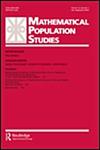从行政登记推断常住人口的知识发现
IF 1.3
3区 社会学
Q3 DEMOGRAPHY
引用次数: 4
摘要
从2018年开始,意大利的人口普查将不再采用传统的“挨家挨户”的统计方式,而是采用结合行政数据和调查的“基于登记册”的系统。一个综合的登记系统使得在大量的行政数据中识别模式和分组成为可能。意大利国家统计研究所(Istat)进行了一项试验,利用行政数据计算通常居住的人口,并查明模式,从而对个人进行分类并构成群体,以便编制基于登记册的人口普查。本文章由计算机程序翻译,如有差异,请以英文原文为准。
Knowledge discovery for inferring the usually resident population from administrative registers
ABSTRACT From 2018 onward, the population census in Italy will leave the traditional “door-to-door” enumeration for a “register-based” system combining administrative data and surveys. An integrated system of registers makes it possible to identify patterns and groups among huge amounts of administrative data. The Italian National Institute of Statistics (Istat) carried out a trial to compute the usually resident population by using administrative data and identify patterns, leading to classify individuals and constitute groups, in order to prepare the register-based census.
求助全文
通过发布文献求助,成功后即可免费获取论文全文。
去求助
来源期刊

Mathematical Population Studies
数学-数学跨学科应用
CiteScore
3.20
自引率
11.10%
发文量
7
审稿时长
>12 weeks
期刊介绍:
Mathematical Population Studies publishes carefully selected research papers in the mathematical and statistical study of populations. The journal is strongly interdisciplinary and invites contributions by mathematicians, demographers, (bio)statisticians, sociologists, economists, biologists, epidemiologists, actuaries, geographers, and others who are interested in the mathematical formulation of population-related questions.
The scope covers both theoretical and empirical work. Manuscripts should be sent to Manuscript central for review. The editor-in-chief has final say on the suitability for publication.
 求助内容:
求助内容: 应助结果提醒方式:
应助结果提醒方式:


